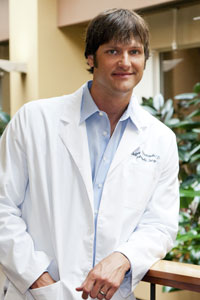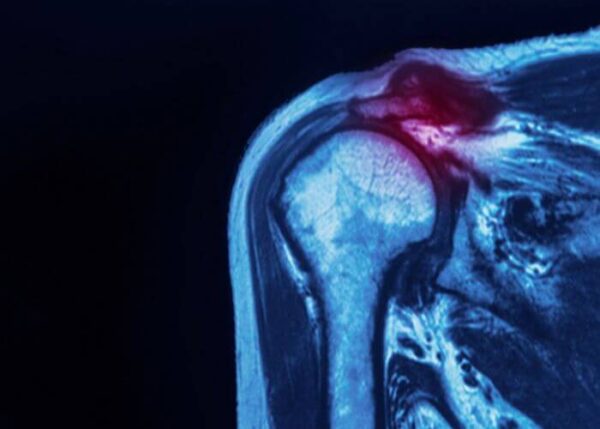Shoulder Labral & SLAP Tear Specialist

Are you an athlete who participates in sports that involve throwing overhead? If so, you may be at risk of developing a shoulder labral tear or a SLAP tear. Labral tears and SLAP tears are common injuries sustained after a fall on an outstretched hand, from a sports injury or from natural degeneration of the labrum. Shoulder labral tear specialist, Dr. Jeff Padalecki provides diagnosis and both surgical and nonsurgical treatment options for patients in Austin who have labral or SLAP tears in the shoulder. Contact Dr. Padalecki’s team today!
An Overview of Shoulder Labral and SLAP Tears
The labrum is a type of cartilage found in the shoulder that surrounds the socket (glenoid) and has two primary functions: 1) to deepen the socket so that the ball of the shoulder stays in place; and 2) the labrum acts as an attachment site for other structures, such as the biceps tendon or shoulder ligaments. When there is an injury to the shoulder, such as a dislocation, the labrum can be peeled off of the rim of the socket (glenoid).
Shoulder labral tears can occur for a variety of reasons and there is a number of ways that this injury can affect a patient. The most serious is when the labrum is torn completely away from the bone. This acute, traumatic injury is often associated with a dislocation or subluxation of the shoulder. Another labrum injury is associated with a tear within the substance of the labrum itself. When this degenerative condition occurs, the labrum is left with an unsmooth, rough edge. This condition is usually found in older patients. A tear can also occur in the area where the biceps tendon attaches to the upper end of the socket (SLAP tear). Austin, Round Rock, and Cedar Park, Texas communities orthopedic shoulder specialist, Dr. Jeff Padalecki, has extensive experience and success in helping patients with labral and SLAP tears.
A SLAP Tear (Superior Labrum Anterior Posterior) refers to a specific type of labral tear in the shoulder, which is located at the top of the shoulder socket (glenoid) and involves the attachment site of the biceps tendon. Acute trauma and overuse are often the causes of this specific type of labrum injury.
What are the Symptoms of Labral and SLAP Tears?
A SLAP tear is often accompanied by pain deep in the shoulder, stiffness, a popping or clicking sensation or feeling of instability. Decreased range of motion or strength can also be present.
How are Labral and SLAP Tears Diagnosed?
Dr. Padalecki will conduct a thorough examination and perform a physical examination to help determine whether or not you have a SLAP tear. During the evaluation, Dr. Padalecki will determine if the tear is associated with any type of pre-existing instability to the shoulder or if it’s from a particular traumatic event. X-rays will rule out any fractures or bone-related issues. Typically, an MRI is most effective in diagnosing a tear.

What is the Treatment for Labral and SLAP Tears?
Several key factors play a role in the decision-making process regarding treatment of a tear, including age, type of tear, and athletic profile.
Non-Surgical
Initially, patients are directed to rest and ice the area, along with taking anti-inflammatory medications followed by a course of physical therapy.
Surgical
When non-surgical treatments fail, arthroscopic surgery of the shoulder is typically recommended. Generally speaking, there are three surgical options for a SLAP tear:
- Debridement: During a debridement procedure, Dr. Padelecki will smooth out the torn labrum during an arthroscopic surgical approach. This option is only suitable for stable SLAP lesions that do not seem to involve the biceps tendon.
- SLAP Repair: A SLAP repair is an arthroscopic procedure that uses anchors with sutures attached to secure the torn labrum down to the shoulder socket. A SLAP repair is the most common procedure done for symptomatic SLAP lesions and is typically reserved for young patients with an otherwise healthy shoulder who want to remain athletically active.
- Biceps tenodesis: A biceps tenodesis cuts the biceps tendon from where it attaches to the labrum, and reattaches it to another area. By decreasing the forces that pull on the SLAP region, the symptoms will be alleviated. A biceps tenodesis can either be performed arthroscopically, or through a small incision.
Post-Op Instructions
A rehabilitation program will be prescribed at your first post-operative visit with Dr. Padalecki. Rehabilitation after surgery is extremely important, especially in athletic individuals who are seeking to get back into regular activity. Without proper rehab, the chance of full recovery is diminished and shoulder stiffness can occur.
For additional information on shoulder labral tears and SLAP tears, or to learn more about arthroscopic shoulder surgery, please contact the office of Dr. Jeff Padalecki, orthopedic shoulder specialist in Austin, Texas.